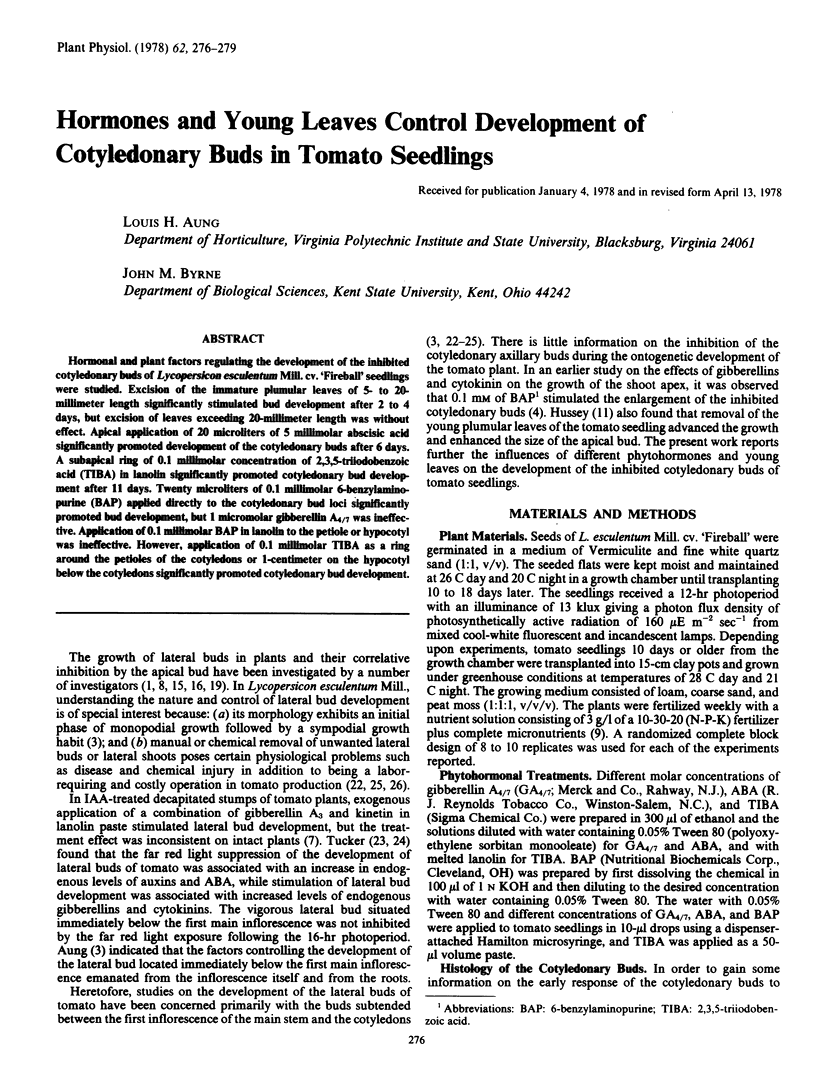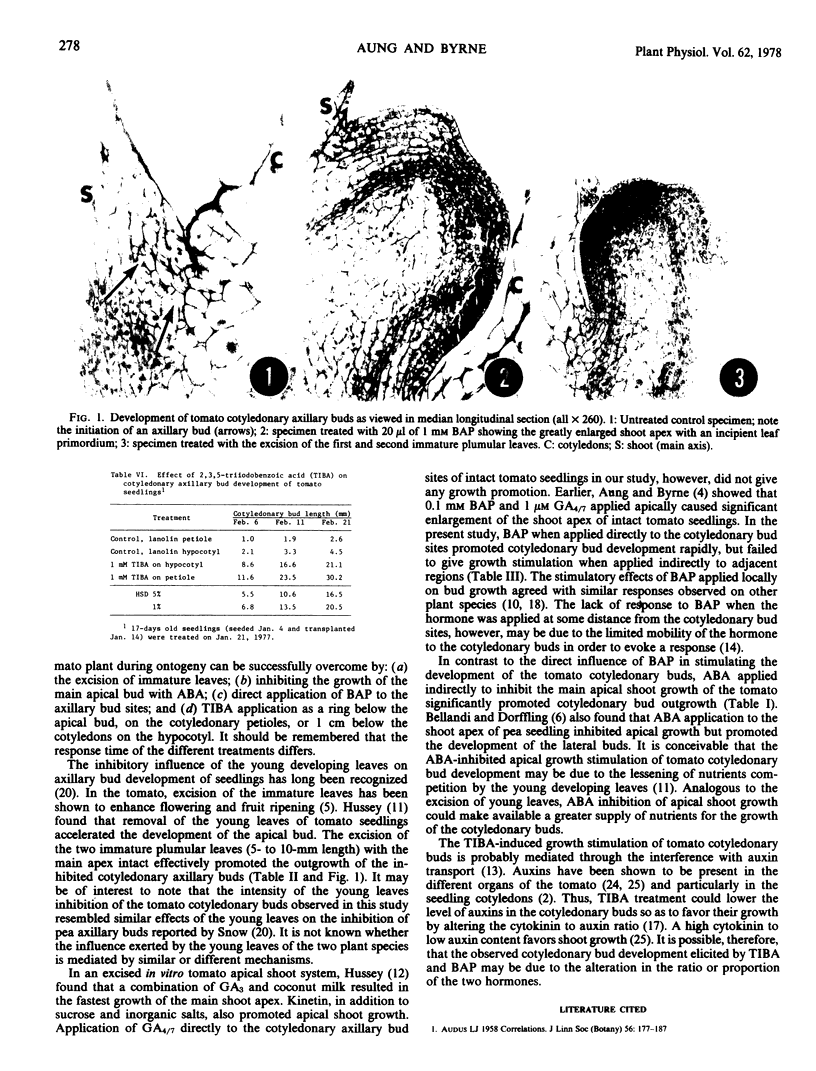Abstract
Hormonal and plant factors regulating the development of the inhibited cotyledonary buds of Lycopersicon esculentum Mill. cv. `Fireball' seedlings were studied. Excision of the immature plumular leaves of 5- to 20- millimeter length significantly stimulated bud development after 2 to 4 days, but excision of leaves exceeding 20-millimeter length was without effect. Apical application of 20 microliters of 5 millimolar abscisic acid significantly promoted development of the cotyledonary buds after 6 days. A subapical ring of 0.1 millimolar concentration of 2,3,5-triiodobenzoic acid (TIBA) in lanolin significantly promoted cotyledonary bud development after 11 days. Twenty microliters of 0.1 millimolar 6-benzylaminopurine (BAP) applied directly to the cotyledonary bud loci significantly promoted bud development, but 1 micromolar gibberellin A4/7 was ineffective. Application of 0.1 millimolar BAP in lanolin to the petiole or hypocotyl was ineffective. However, application of 0.1 millimolar TIBA as a ring around the petioles of the cotyledons or 1-centimeter on the hypocotyl below the cotyledons significantly promoted cotyledonary bud development.
Full text
PDF






